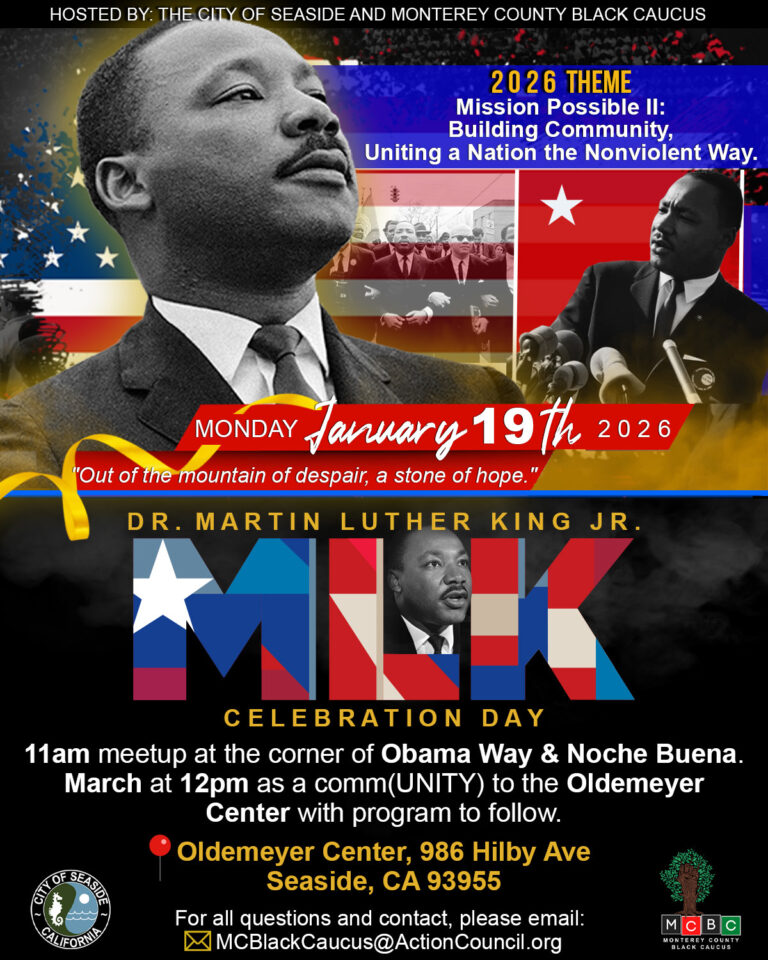
Yvonne Thomas, former President, NAACP, Monterey County Branch 1049, wins the 2025 Human Rights Award, awarded by the United Nations and the Baha’i Faith Community. Watch the video!
A Community Remembers Mrs. Helen Rucker
- https://conta.cc/4p8SRN9](https://conta.cc/4p8SRN9… — will serve as a worthy historical record of her life and legacy as well as a testimony of the love of her people and community.
- https://conta.cc/4acWE7p – Looking Back issue
Resources for CalFresh/SNAP Pause
Community Food & Nutrition Resources
We understand that the ongoing government shutdown may cause uncertainty regarding access to essential services for community members, particularly with the anticipated pause in CalFresh/SNAP benefits on November 1, 2025. Here are some resources.
Seaside Certified Farmers’ Market – 1259 Canyon Del Rey Blvd, Seaside | Thursdays, 3–7 p.m. Accepts EBT, WIC, and Senior FMNP benefits.
Alisal Produce Box Distribution – 632 E Alisal St, Salinas | Tuesdays, 1–2 p.m. (Oct. 28, 2025 – May 26, 2026).
Free Farms Together Produce Boxes – Available now through 2026! Eligible low-income residents can pick up a free weekly box (valued at $26 in fresh produce) at the Seaside Farmers’ Market Info Booth. Bring proof of eligibility, such as an EBT or Medi-Cal card.
Food Bank of Monterey County – Emergency Food Assistance & Distribution Schedule.
Salvation Army Monterey Peninsula Corps – Shabu Shake Good Samaritan Center, Food and Meal Services; provides hot meals and produce boxes.
Catholic Charities of the Diocese of Monterey – Nutrition and Food Support Programs.
Shoreline Church Food Pantry – Weekly Food Pantry Information.
Everyone’s Harvest – Market Bucks Program and nutrition support for Medi-Cal eligible individuals.
Additional Support
Call or text 211 for local food and housing resources.
Visit FindHelp.org to search for free or reduced-cost food, housing, financial, and healthcare services and resources.
While the CalFresh/SNAP benefits pause is scheduled to begin on November 1, it is important to note that CalWORKs and MediCal benefits and resources are not impacted by the federal shutdown at this time. Be assured that we are closely monitoring potential impacts that support students and community members.
Current Sources
Contact Anita Crawley acrawley@comcast.net if you would like to add your organization’s events to this calendar.
